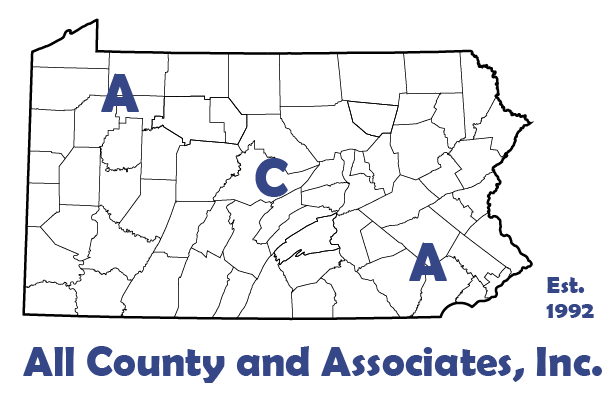
You may have heard the news. FEMA is launching a new Flood Insurance Rating Plan on October 1, 2021. This will be the first update since the creation of the program in 1968. Let’s take a look at how the current program works and how this new upgrade will change that.
Flood Insurance in Pennsylvania
In Pennsylvania, 51,600 properties take part in the National Flood Insurance Program (NFIP). That said, upwards of 5,000,000 properties are not covered. Instead, they either rely on private insurance or carry no coverage. Properties with loans backed by the Federal government must take part in the NFIP. But private mortgages may need flood insurance as well. The five highest coverage counties are Allegheny, Bucks, Luzerne, Montgomery, and Philadelphia.
FEMA estimates that the average claim payout is around $27,600. This is because mandatory insurance covers the building, not the contents. To cover personal contents, policy holders must increase their coverage. This will raise their premiums, like typical insurance coverage add-ons. Given the new program, FEMA estimates 30% of policies will see a premium decrease. Conversely, they see 7% of policies seeing an increase greater than $20 per month. Finally, there is a regulatory cap of 18% increase in a given year, for most policies.
Current Flood Insurance Program
So, let’s look how the current program works and determines the premium rates. Currently, the program covers up to $250,000 for the home. If elected, the program can also cover up to $100,000 in contents. There are many limitations on items covered.
The current program considers a limited number of criteria. The first criteria is if the house predates the FIRM (flood insurance rate map). This will determine the rate tables utilized. Then the program looks at the occupancy. This breaks the tables into single-family, 2-4 family, other residential and non-residential. Next is the type of construction. There are four types of house construction. These categories are no basement/enclosure, with basement, with enclosure and manufactured (mobile) home. Finally, the post-firm tables consider the elevation of the lowest floor versus the base flood elevation (BFE).
This means the current program does not account for the house value or frequency of flood. Thus, people who have lower value houses, or are less frequently flooded, subsidize the premium of higher cost homes or more frequently flooded homes.
Flood Insurance Program Update
To rebalance the program. FEMA is releasing the first update since the program’s inception. Starting October 1, 2021, new policies and individuals renewing that receive a decrease will use the new program. On April 1, 2022, all remaining policies renewing will be subject to the new program.
The new program takes a more holistic approach to flood insurance. The program now starts with five different perils of flooding. These perils depend on your geographic location to different types of water sources and thus flooding. The perils are Inland Flooding, Storm Surge, Tsunami, Great Lakes and Coastal Erosion. Then each peril contains two categories, building and contents. Each one of these perils and categories have an assigned base rate, and is per $1,000 of coverage.
Then, begins the evaluation of geographical characteristics of the house. With some characterizes corresponding to perils. For inland flood coverage, distance to the river, elevation to the river, drainage area of the river and structural relative elevation will apply factors to the base rate. Storm Surge, Tsunami, and Coastal Erosion, consider only distance to coast, distance to ocean and elevation to ocean. These values vary based on whether the property is on a barrier island. Finally, the Great Lakes peril considers the distance to lake and elevation to lake. Now the evaluation moves to the structure itself. This evaluation looks at the type of use, floors of interest, foundation type, first floor height, and the elevation of mechanic and electrical components above the first floor. With all these elements determined, the calculations begin and new premiums determined.
Interestingly, private industry has used this calculation for many years. So, in other words, FEMA is just catching up.
Who is ACA?
Started in 1992 and located in Chester County, PA ACA has grown to become a full-service civil engineering firm. Today, we merge professional services with practical knowledge for residential and commercial projects. No matter the scale, from installing a fence, to building a structure or developing land, you need permits. Because the approval process includes many permits and agencies, it can be a headache. Working with ACA’s full-service team saves you time, money, and headaches. Every step of the way, we are here to support you and educate you about the process. Here are some of the basic services we provide:
Construction Management | Civil Engineering | Environmental Permitting | Septic System Testing and Design | Land Surveying | Wetland Delineations and Mitigation
Please feel free to browse our website or if working on a project or need help, contact us at (610) 469-3830.


